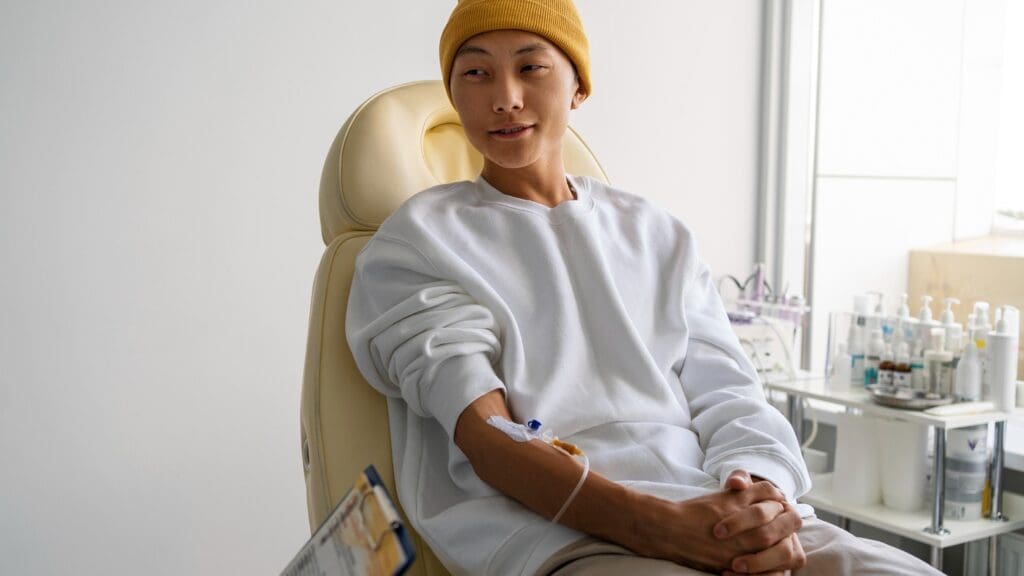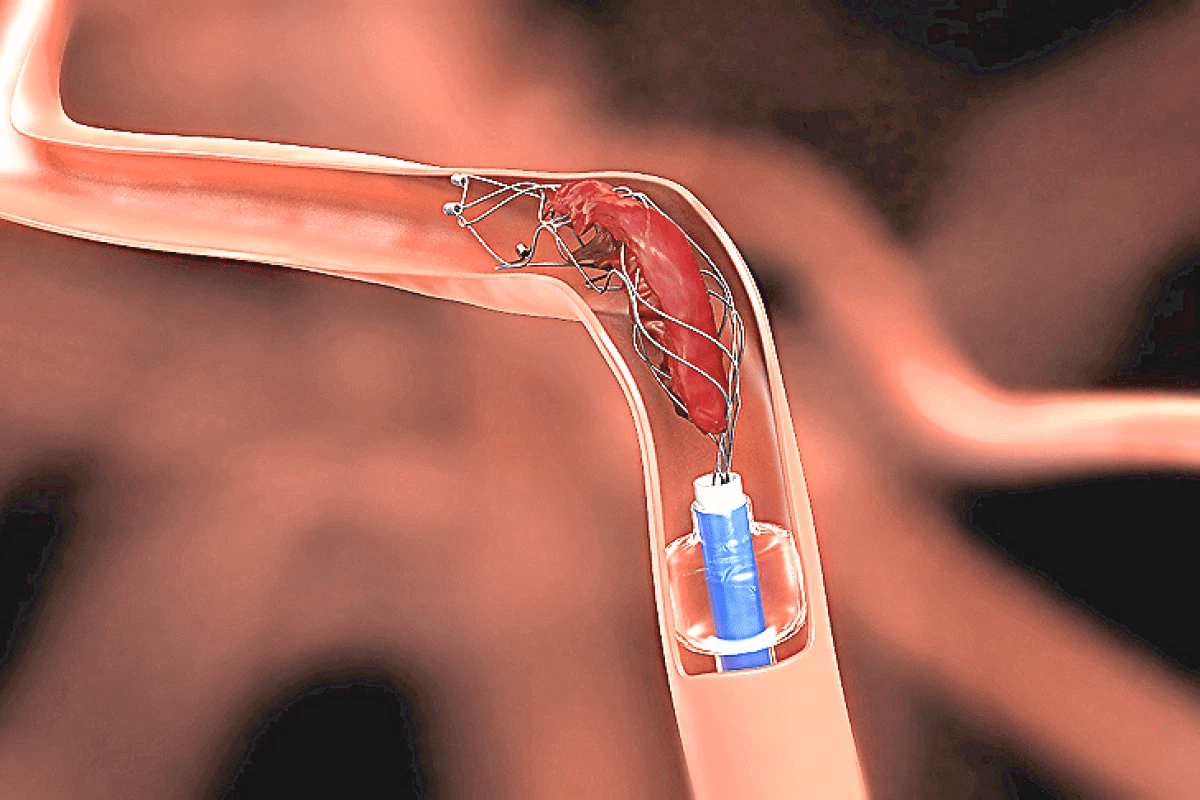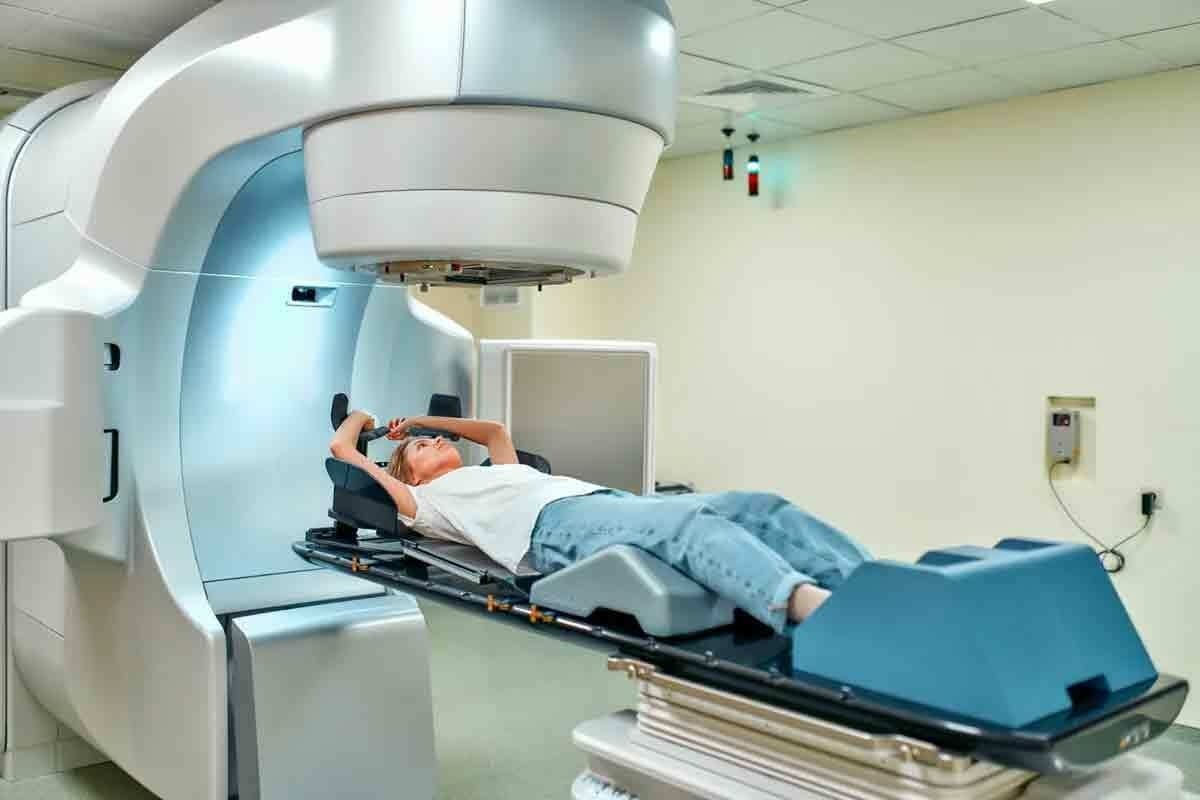Last Updated on November 27, 2025 by Bilal Hasdemir

Getting a report saying ‘no evidence of malignancy‘ can be a huge relief. But it’s important to really understand what it means for your health.
At Liv Hospital, we know how key it is to clear up this diagnosis. ‘No evidence of malignancy‘ means no cancerous cells were found in the tissue or sample checked. Studies show that catching cancer early and accurately can greatly improve treatment results.
It’s vital for patients to grasp the full meaning of this diagnosis. We’ll dive into what it signifies and what steps to take next. At Liv Hospital, we aim to offer top-notch healthcare and full support to patients from abroad.
Key Takeaways
- Understanding ‘no evidence of malignancy’ is key for patient health.
- This diagnosis shows no cancer cells were found in the sample.
- Early and accurate diagnosis greatly boosts patient outcomes.
- Liv Hospital provides world-class healthcare and support for international patients.
- It’s important to follow up after getting this diagnosis.
Understanding What “No Evidence of Malignancy” Actually Means
Getting a diagnosis of ‘no evidence of malignancy’ can be a big relief. But it’s important to really understand what it means. We’ll explain the medical term, its importance, and when it’s given.
Medical Definition and Clinical Significance
‘No evidence of malignancy’ means no cancer cells were found in a sample. This is after a detailed look at tissue or fluid samples. These samples come from different tests.
This news is good, but it doesn’t mean you’re completely cancer-free. Early detection is key to better cancer treatment. So, it’s vital to understand and act on your test results.
Common Scenarios When This Diagnosis Is Given
This diagnosis often comes after biopsies or other tests. It’s also seen in imaging studies that show no cancer.
Let’s look at some examples where you might hear ‘no evidence of malignancy’:
| Diagnostic Procedure | Common Indications | Implication of “No Evidence of Malignancy” |
|---|---|---|
| Biopsy | Suspicious tissue growth | No cancer cells found in the sampled tissue |
| Fine-needle Aspiration | Lumps or nodules | No malignant cells detected in the aspirated sample |
| Imaging Studies (e.g., MRI, CT scans) | Suspicious masses or lesions | No clear evidence of cancer in the imaged area |
The Difference Between “Negative” and “No Evidence of Malignancy”
‘Negative’ and ‘no evidence of malignancy’ might seem the same, but they’re not. ‘Negative’ means a test didn’t find what it was looking for. ‘No evidence of malignancy’ is about not finding cancer cells in a sample.
It’s important to know the difference. It helps patients understand their diagnosis better. And it helps doctors talk about it clearly.
The 7 Key Facts About No Evidence of Malignancy Results
Knowing what “no evidence of malignancy” means is key for patients. It tells them about their health and what to do next. This news is good, but there are important things to keep in mind.
Fact 1: It Indicates No Cancer Cells Were Found in Your Sample
A “no evidence of malignancy” result is a big relief. It means doctors found no cancer cells in your sample. This is a major finding, showing there are no cancer cells in the tested area.
Fact 2: It Doesn’t Guarantee Complete Absence of Cancer
Even though you got a “no evidence of malignancy” result, it’s not a complete guarantee. There could be reasons why cancer wasn’t found. This could be because the cancer is in an early stage or in a hard-to-reach place.
Fact 3: The Result Is Specific to the Tested Area Only
The diagnosis only talks about the tested area. It doesn’t say anything about other parts of your body. So, it’s very important to talk to your doctor about what it means for your whole health.
Fact 4: Follow-up Is Stil Essential Despite Good News
Even with a “no evidence of malignancy” result, you need to keep up with your care. Your doctor might want you to have more tests or check-ups. This is to catch any problems early.
Some important things to think about during follow-up include:
- Regular check-ups with your healthcare provider
- Additional testing or screening as recommended
- Making lifestyle changes to reduce risk factors
By knowing these 7 key facts, patients can handle their diagnosis better. It’s important to keep up with the care your doctor suggests. This helps keep you healthy and safe.
Types of Tests That Lead to a “No Evidence of Malignancy” Finding
A “no evidence of malignancy” result comes from specific medical tests. These tests help find cancerous cells. We’ll look at the different tests that can show this result.
Biopsies and Tissue Sampling Procedures
Biopsies are key in checking for cancer. A sample of tissue is taken and checked for cancer cells. There are several types of biopsies, including:
- Needle biopsy, where a thin needle is used to collect tissue or fluid samples.
- Incisional biopsy, which involves removing a portion of the suspicious area.
- Excisional biopsy, where the entire suspicious area is removed for examination.
Fine-Needle Aspiration and Cytology Tests
Fine-needle aspiration (FNA) is used to check lumps or masses under the skin. It uses a thin needle to collect cells. FNA is less invasive and can check for cancer in many areas, like the thyroid or lymph nodes.
Cytology tests examine individual cells. They are often used with FNA. These tests help find out if cells are benign or malignant.
Imaging Studies and Their Role in Diagnosis
Imaging studies like X-rays and CT scans are important in diagnosing cancer. They can’t alone confirm cancer but help find areas that need more tests. These studies help doctors see inside the body and check how well treatments are working.
How to Read and Interpret Your Pathology Report
A pathology report is key to understanding your health. Knowing how to read it can help you take charge of your care. It’s important to grasp the different parts and terms used.
Key Sections and Terminology in Pathology Reports
Pathology reports have several important sections. The clinical information section talks about your medical history and why you had the test. The description of the specimen section explains the sample type and its details.
It’s vital to understand the report’s terms. Words like “benign,” “malignant,” “in situ,” and “invasive” are used to describe findings. We’ll help you understand these terms to grasp your diagnosis better.
Understanding the Diagnostic Conclusion
The diagnostic conclusion is the most important part of your report. It sums up the findings and gives a diagnosis. If it says “no evidence of malignancy,” it means no cancer cells were found.
But remember, this conclusion only applies to the sample tested. It might not show your whole condition’s status. It’s best to talk to your doctor to fully understand what it means.
| Term | Definition |
|---|---|
| Benign | Non-cancerous |
| Malignant | Cancerous |
| In Situ | Cancer cells that have not spread |
| Invasive | Cancer cells that have spread into surrounding tissues |
Questions to Ask Your Doctor About Your Results
When you get your pathology report, you’ll likely have questions. It’s good to ask your doctor about your results, what’s next, and any more tests you might need.
- What do the findings mean for my condition?
- Are there any additional tests or procedures needed?
- What are the next steps in my treatment plan?
By understanding your pathology report and asking the right questions, you can be more involved in your healthcare journey.
Limitations of “No Evidence of Malignancy” Diagnoses
“No Evidence of Malignancy” doesn’t mean there’s no cancer at all. This diagnosis can offer relief, but it’s important to know its limits. We’ll look at the issues like sampling errors, false negatives, and the tech limits of tests.
Sampling Errors and Their Frequency
Sampling errors happen when the biopsy sample doesn’t truly show what’s going on. Research shows these errors can lead to wrong diagnoses. So, getting a good sample is key.
False Negative Results: Causes and Prevalence
False negatives occur when tests say there’s no cancer when there is. This can be due to test flaws or its own limits. For example, a study on carcinoembryonic antigen (CEA) levels found that some benign conditions can raise CEA levels. This can give false hope.
Technical Limitations of Current Testing Methods
Even with progress, tests have their own limits. For instance, how well tests can spot cancer can differ. This affects the trust in “No Evidence of Malignancy” results.
| Limitation Type | Description | Impact on Diagnosis |
|---|---|---|
| Sampling Errors | Inaccurate tissue representation | Potential for missed diagnosis |
| False Negative Results | Incorrect test results indicating no cancer | False reassurance, delayed diagnosis |
| Technical Limitations | Limitations in test sensitivity and specificity | Variable accuracy of diagnosis |
In summary, while a “No Evidence of Malignancy” diagnosis is good news, it’s not foolproof. Knowing its limits helps both patients and doctors make better choices about care and tests.
The Emotional Journey After Receiving Your Diagnosis
When you get your diagnosis, you might feel a mix of emotions. You could feel relieved or unsure. It’s a complex mix of feelings that many face after hearing “no evidence of malignancy.” It’s key to understand and handle these emotions.
Managing Relief While Acknowledging Uncertainty
Feeling relieved is normal after hearing “no evidence of malignancy.” But, it’s also important to face the uncertainty. A patient shared, “I felt on cloud nine, yet something felt off.” It’s vital to let yourself feel both relief and uncertainty to stay mentally healthy.
To manage your emotions, consider these steps:
- Seek support from loved ones or groups
- Try stress-reducing activities like meditation or yoga
- Write in a journal to process your feelings
Communicating Results to Family and Friends
Telling family and friends about your diagnosis can be tough. You might want to share the good news but also feel uncertain. Being honest about your feelings is key, letting them know you’re relieved but processing.
“I was surprised by how supportive my family was. They had been worried sick, and when I shared the news, they were overjoyed. It was a moment of pure joy, and it helped us all heal together.”
When sharing your results, keep these tips in mind:
- Pick the right time and place to share
- Be ready for different reactions from loved ones
- Use it as a chance to strengthen your support network
Coping Strategies for Lingering Anxiety
Even with a “no evidence of malignancy” diagnosis, anxiety can stay. Effective coping strategies are key to managing this anxiety and moving forward with confidence.
Some good strategies include:
- Stay informed about your condition and any follow-ups
- Practice mindfulness and relaxation techniques
- Set realistic goals and celebrate small wins
By recognizing your emotions and using good coping strategies, you can better handle the emotional journey after your diagnosis.
Recommended Follow-up After No Evidence of Malignancy
Getting a diagnosis with no evidence of malignancy is a big relief. But, it’s important to keep up with recommended monitoring. We know this news is reassuring, but staying vigilant is key to your care. Here, we’ll talk about standard monitoring, when extra tests might be needed, and how to make a follow-up plan just for you.
Standard Monitoring Protocols by Condition Type
The monitoring plan can change a lot based on the condition. For example, if you had a biopsy for cancer, you might need regular imaging tests. This could be mammograms or MRIs, depending on where the test was done.
| Condition Type | Recommended Monitoring Protocol | Frequency |
|---|---|---|
| Breast Cancer Screening | Mammography | Annually |
| Thyroid Nodule Evaluation | Ultrasound | Every 6-12 months |
| Colon Cancer Screening | Colonoscopy | Every 10 years (if results are normal) |
When Additional Testing Might Be Necessary
Even with a “no evidence of malignancy” diagnosis, you might need more tests sometimes. This could be because of new symptoms, changes in old symptoms, or if you’re at high risk for cancer.
Key scenarios that may necessitate further testing include:
- Development of new, unexplained symptoms
- Changes in family history that increase your risk profile
- Exposure to certain risk factors (e.g., radiation, certain chemicals)
Creating a Personalized Follow-up Plan
It’s important to make a follow-up plan that fits you. This means looking at your medical history, current health, and any risks you might have.
To create an effective plan, we recommend:
- Discussing your personal and family medical history with your healthcare provider
- Understanding the specific risks associated with your condition
- Adhering to the recommended monitoring schedule
Risk Factors That Require Continued Vigilance
A “no evidence of malignancy” result is reassuring. But, it’s also key to know about factors that could raise cancer risk. Getting a clean bill of health is a big relief. Yet, staying vigilant is important for ongoing health.
Several key factors can up the risk of getting cancer, even after a negative diagnosis. Knowing these risk factors helps patients stay proactive about their health.
Genetic and Family History Considerations
Genetic predisposition is a big deal in cancer risk. People with a family history of certain cancers might be at higher risk. We suggest talking to your healthcare provider if you have a family history of cancer.
- Family History: Cancer in first-degree relatives (parents, siblings, or children) raises risk.
- Genetic Mutations: Mutations like BRCA1 and BRCA2 up the risk of breast and ovarian cancers.
- Ethnic Background: Some ethnic groups face a higher risk of certain cancers.
Lifestyle and Environmental Risk Factors
Lifestyle choices and environmental exposures greatly affect cancer risk. We advise patients to be mindful of these factors to lower their cancer risk.
- Tobacco Use: Smoking and tobacco use are major causes of preventable cancer deaths worldwide.
- Diet and Exercise: A diet heavy in processed foods and low in fruits and veggies, plus lack of exercise, raises cancer risk.
- Environmental Exposures: Exposure to carcinogens like asbestos, radon, and certain chemicals can increase cancer risk.
Previous Medical Conditions That Increase Risk
Certain previous medical conditions can up the risk of getting cancer. Patients with these conditions should stay vigilant and follow their healthcare provider’s advice for monitoring and prevention.
- Previous Cancer Diagnosis: Having had cancer before can raise the risk of getting a new, unrelated cancer.
- Chronic Inflammatory Conditions: Conditions like ulcerative colitis can increase the risk of colorectal cancer.
- Infections: Certain infections, like human papillomavirus (HPV), are linked to higher cancer risk.
Understanding these risk factors helps patients work with their healthcare providers to create a plan for cancer prevention and early detection.
How Advanced Medical Facilities Ensure Accurate Diagnoses
At Liv Hospital, we focus on making sure our diagnoses are right. We use top-notch quality control and teamwork to do this. Getting a correct diagnosis is key to good treatment, and we aim for the best in this area.
Quality Control Measures in Modern Pathology
We take strict quality control measures to make sure our test results are accurate. These steps include:
- Regular checks and upkeep of our diagnostic tools
- Following set rules for collecting and handling samples
- Training and testing our lab team regularly
- Joining external quality checks
Following these steps helps us avoid mistakes. This way, we can give our patients reliable and accurate diagnoses. For more on quality control in pathology, check out this chapter.
The Role of Multidisciplinary Teams
A multidisciplinary team is key to top-notch diagnosis. At Liv Hospital, we have experts from different fields working together. They help interpret test results and plan treatments.
Our teams have regular meetings to share knowledge and improve. This teamwork keeps us up-to-date with new diagnostic methods and treatments. It helps our patients get the best care.
Liv Hospital’s Approach to Diagnostic Excellence
At Liv Hospital, we aim to be among the best globally. We offer top-notch healthcare and support for international patients. Our dedication to excellence shows in our modern facilities and staff training.
We always look to improve our diagnostic methods. This ensures we provide the most accurate and effective care. For more on what we offer, visit our website at Liv Hospital.
By using advanced tech, strict quality control, and teamwork, we at Liv Hospital aim for accurate diagnoses. We’re committed to giving our patients the best care possible.
The Critical Importance of Early Detection Despite Negative Findings
Early detection is key, even when tests show no cancer. It’s vital for managing and treating many health issues. We stress the need to stay alert and follow screening guidelines for the best health results.
Statistics on Early Detection and Survival Rates
Studies prove early detection boosts survival rates for many cancers and diseases. For example, early breast cancer detection leads to much better survival rates than late detection. Health groups agree that early detection can lead to better treatment and lower death rates.
Key statistics highlighting the importance of early detection include:
- Early detection can increase the chances of successful treatment by up to 90% for certain conditions.
- The survival rate for cancers detected at an early stage can be as high as 95% or more, depending on the type of cancer.
- Regular screenings can help identify health issues before symptoms become apparent, leading to more effective interventions.
Recommended Screening Guidelines by Age and Risk
Screening guidelines help find health issues early, when they’re easier to treat. These guidelines depend on age, risk factors, and other factors. For example:
- Women over 40 are generally recommended to undergo annual mammograms for breast cancer screening.
- Individuals with a family history of certain cancers may need to start screenings earlier and have more frequent tests.
- Guidelines for colon cancer screening typically recommend starting at age 45 for individuals with average risk.
It’s important to talk to your doctor to find out the best screening schedule for you.
Symptoms That Should Never Be Ignored
While screenings are important, noticing and reporting unusual symptoms is also key. Some symptoms need immediate medical attention, such as:
- Unexplained weight loss
- Persistent pain or discomfort
- Unusual changes in bodily functions or appearance
It’s vital to listen to your body and seek medical advice if you notice anything unusual or persistent. Early detection and action can greatly improve treatment outcomes and health.
When to Seek a Second Opinion on Your No Evidence of Malignancy Result
A ‘no evidence of malignancy’ result is reassuring. But, some situations call for a second medical opinion. Getting a diagnosis can be emotional, and it’s key to get the best care.
Persistent Symptoms Despite Negative Results
If symptoms keep coming back or get worse, even with a ‘no evidence of malignancy’ result, get checked again. Don’t ignore your body’s signals. Sometimes, symptoms mean there’s something else going on that wasn’t caught first. Talk to your doctor and think about getting a second opinion from a specialist.
High-Risk Patient Considerations
If you’re at high risk, like having a family history of cancer or having had cancer before, getting a second opinion is a good idea. Your risk factors can influence how your results are seen. A specialist can look at your risk and suggest more tests or follow-ups if needed.
| Risk Factor | Considerations for Second Opinion |
|---|---|
| Family History of Cancer | Genetic counseling and enhanced screening |
| Previous Malignancies | More frequent follow-up and monitoring |
| Genetic Predisposition | Specialized testing and preventive measures |
Selecting the Right Specialist for Reevaluation
Picking the right specialist for a second opinion is important. Look for someone with the right expertise for your condition or cancer concern. Make sure they’re well-known and work at a respected medical place. Your primary doctor or patient advocacy groups can also help find a good specialist.
Getting a second opinion is a smart health move. Knowing when to ask for more checks helps you make better care choices. This way, you can be sure you’re getting the best treatment.
Conclusion: Moving Forward With Confidence and Vigilance
Getting a “no evidence of malignancy” diagnosis is a big relief. It’s more than just a medical finding. It’s a key part of your healthcare journey.
It’s important to understand what this diagnosis means for your care. We’ve talked about what it implies and how it affects your ongoing health.
Even with a negative diagnosis, research shows we need to stay vigilant. We suggest keeping up with the monitoring or follow-up your doctor recommends. This helps catch any problems early.
Understanding your diagnosis and what comes next is key to moving forward confidently. We urge you to keep talking with your healthcare team. Stick to the follow-up plans they suggest. This way, you can handle your health journey with confidence and care.
At Liv Hospital, we’re all about top-notch healthcare for our international patients. Our teams work together to give you the best care. We’re here to support you every step of the way.
FAQ
What does “no evidence of malignancy” mean in a medical diagnosis?
“No evidence of malignancy” means tests found no cancer cells in the sample. But, it doesn’t mean cancer is completely gone. It only shows there’s no cancer in the tested area.
How is “no evidence of malignancy” different from a “negative” test result?
“No evidence of malignancy” is more specific. It means no cancer cells were found in the sample. A “negative” result might not always mean there’s no cancer.
What types of tests can result in a “no evidence of malignancy” finding?
Tests like biopsies and imaging studies can show no cancer. The test type depends on the body area and suspected condition.
Why is follow-up care necessary after a “no evidence of malignancy” diagnosis?
Follow-up care is key because a “no evidence of malignancy” result isn’t always final. It’s specific to the tested area. Regular checks help catch any new issues early.
How can I understand my pathology report?
Look for key parts like clinical info and microscopic description in your report. Ask your doctor about unclear terms to understand your diagnosis better.
What are the limitations of a “no evidence of malignancy” diagnosis?
Limitations include sampling errors and false negatives. Test timing and sample quality can affect results. Current testing methods also have limits.
How should I manage my emotions after receiving a “no evidence of malignancy” diagnosis?
It’s important to feel relieved but also acknowledge any doubts. Talking to loved ones and using anxiety coping strategies can help.
What follow-up actions are recommended after a “no evidence of malignancy” diagnosis?
Follow standard monitoring plans and get more tests if needed. Work with your healthcare provider to create a follow-up plan.
Are there risk factors that require continued vigilance despite a “no evidence of malignancy” diagnosis?
Yes, genetic predisposition and family history are examples. Lifestyle and environmental factors, and past medical conditions, also need attention.
How do advanced medical facilities like Liv Hospital ensure accurate diagnoses?
They use quality control, teams for full assessments, and focus on diagnostic excellence. This ensures accurate diagnoses.
Why is early detection important even after a “no evidence of malignancy” diagnosis?
Early detection boosts survival chances. Stick to screening guidelines and watch for symptoms that shouldn’t be ignored.
When should I seek a second opinion on my “no evidence of malignancy” result?
Consider a second opinion for ongoing symptoms, high-risk status, or a specialist review. Choosing the right specialist is key.
References
- MyPathologyReport. What is negative for malignancy? https://www.mypathologyreport.ca/pathology-dictionary/negative-for-malignancy/
- Wikipedia. Malignancy https://en.wikipedia.org/wiki/Malignancy
- SEER Training. Introduction to the SEER Training Website https://www.training.seer.cancer.gov/help/
- MD Anderson. Remission, cancer‑free, no evidence of disease: What’s the difference? https://www.mdanderson.org/cancerwise/remission–cancer-free–no-evidence-of-disease–what-is-the-difference-when-talking-about-cancer-treatment-effectiveness-and-results.h00-159460845.html
- National Center for Biotechnology Information (NCBI). In the NCBI Bookshelf: NBK82165 https://www.ncbi.nlm.nih.gov/books/NBK82165/








